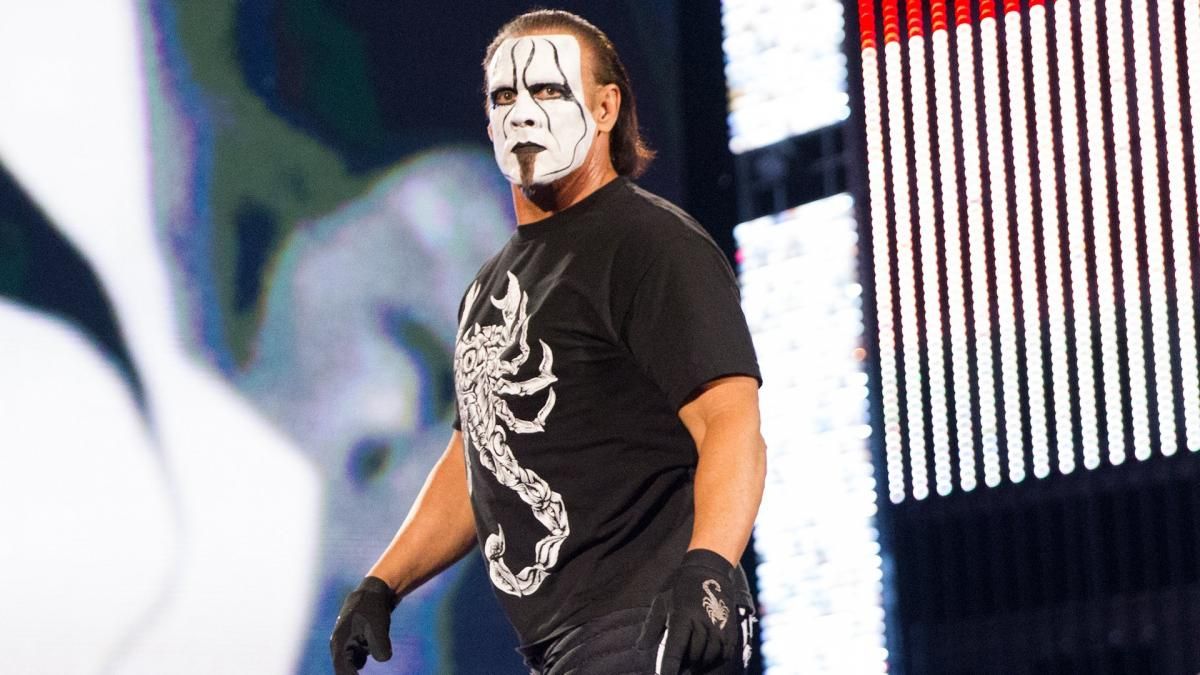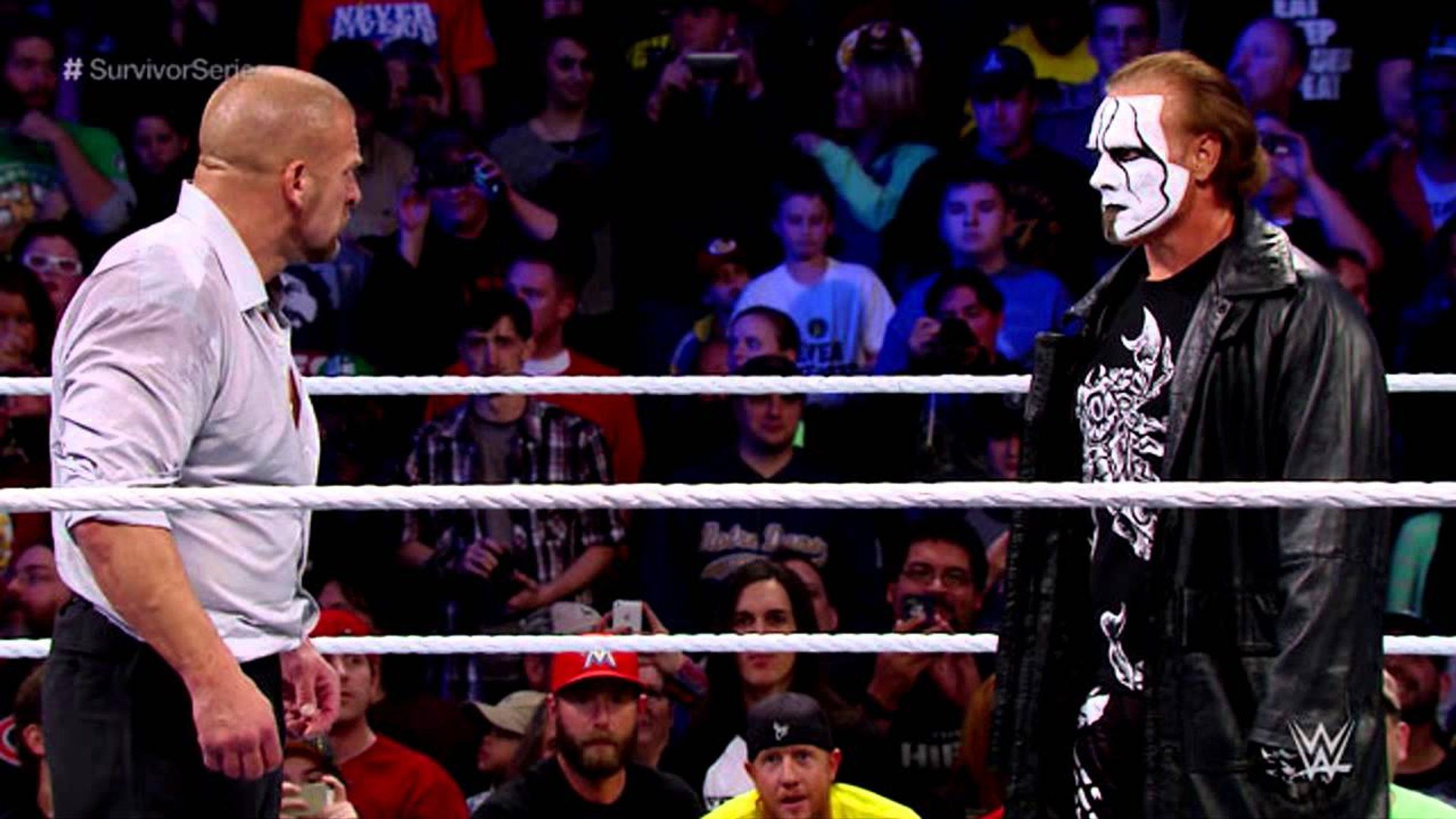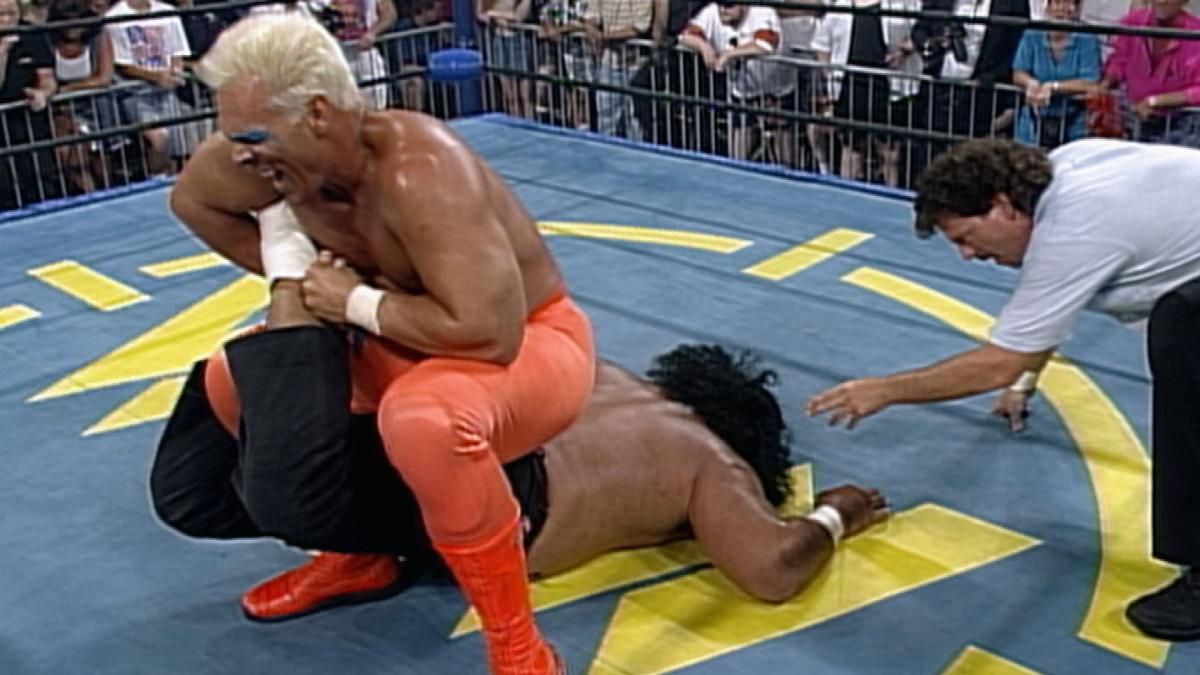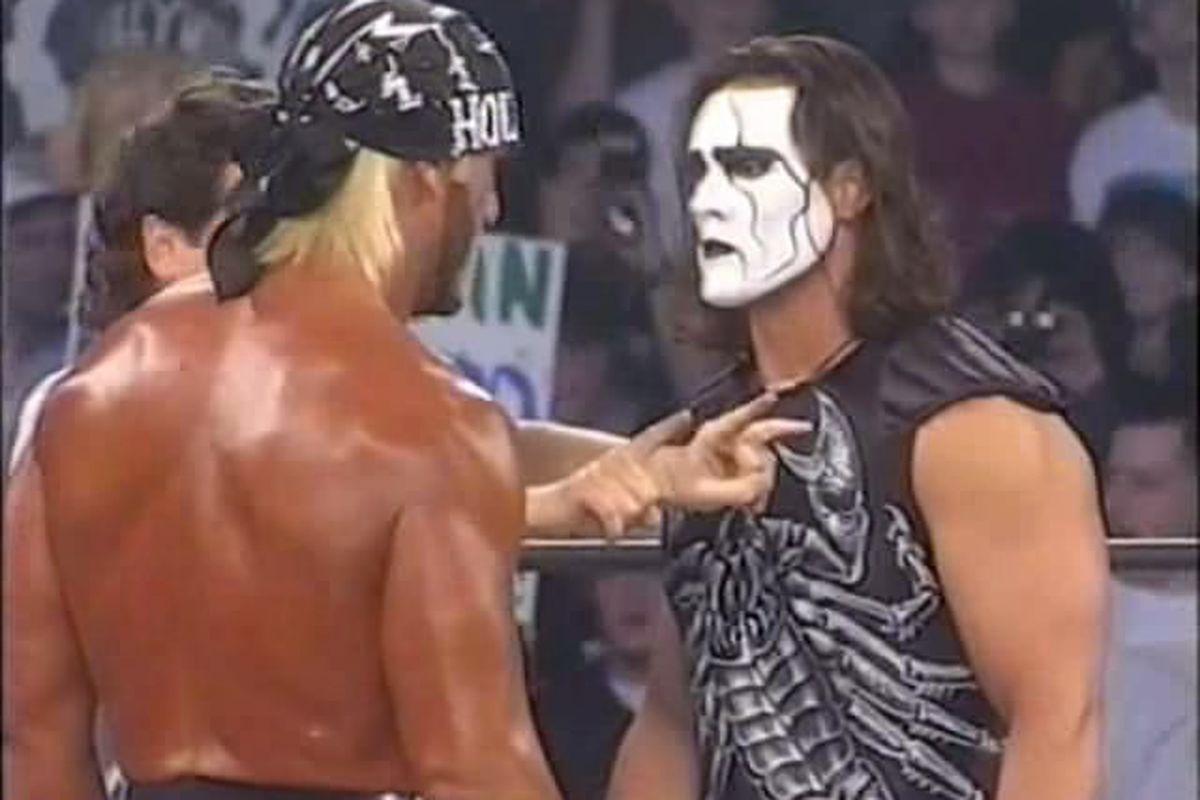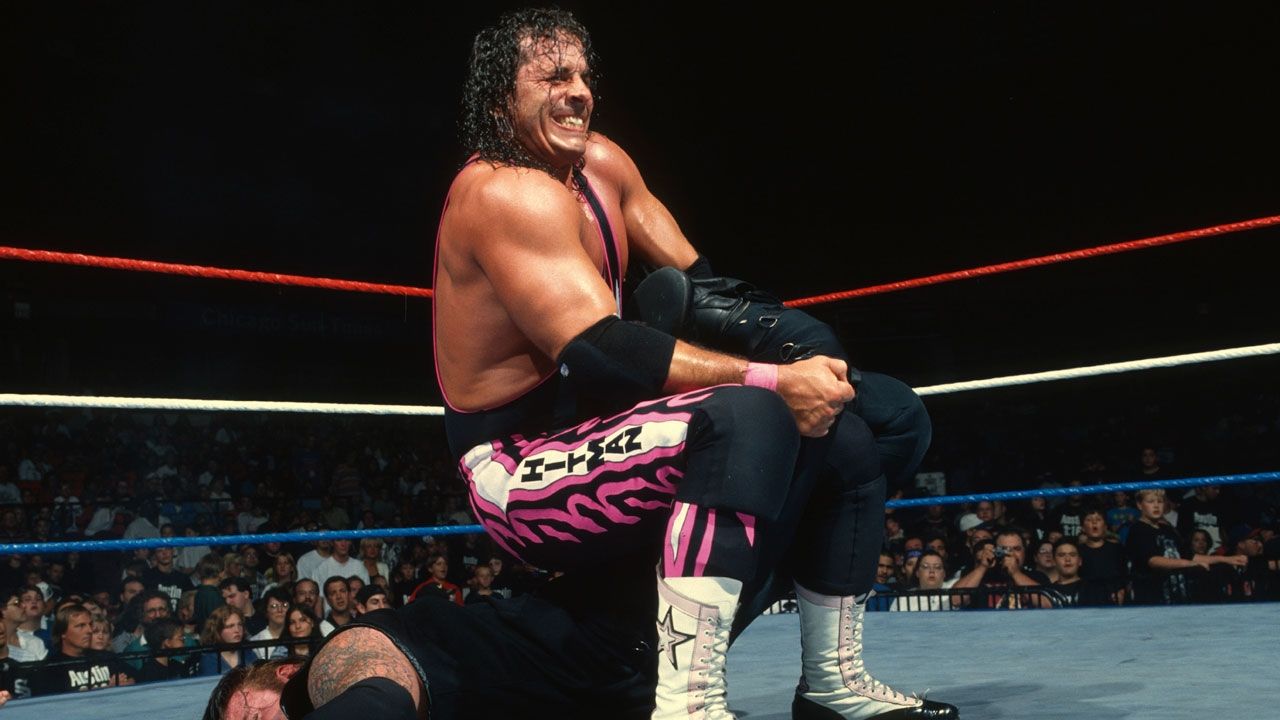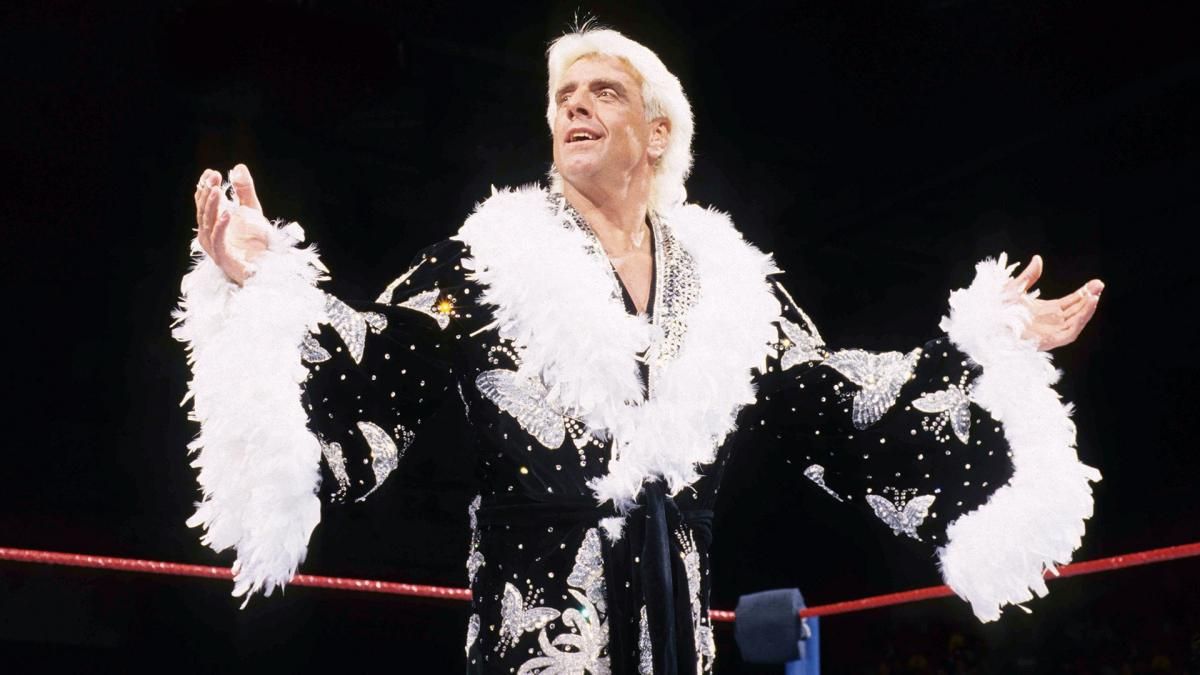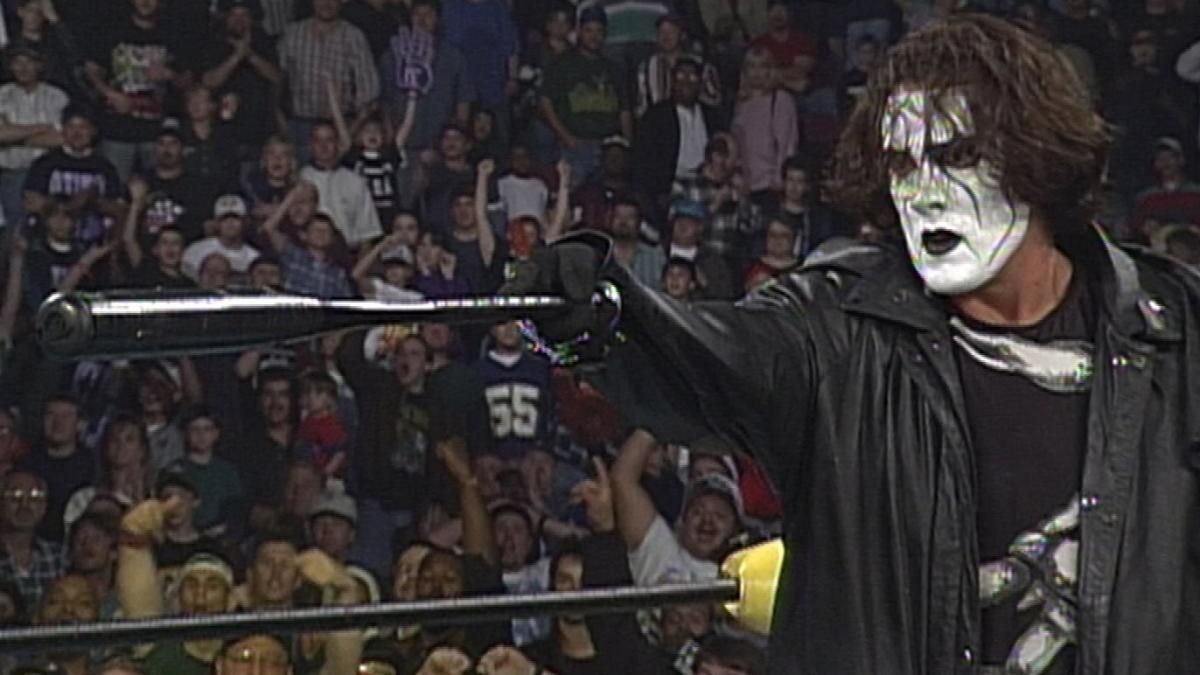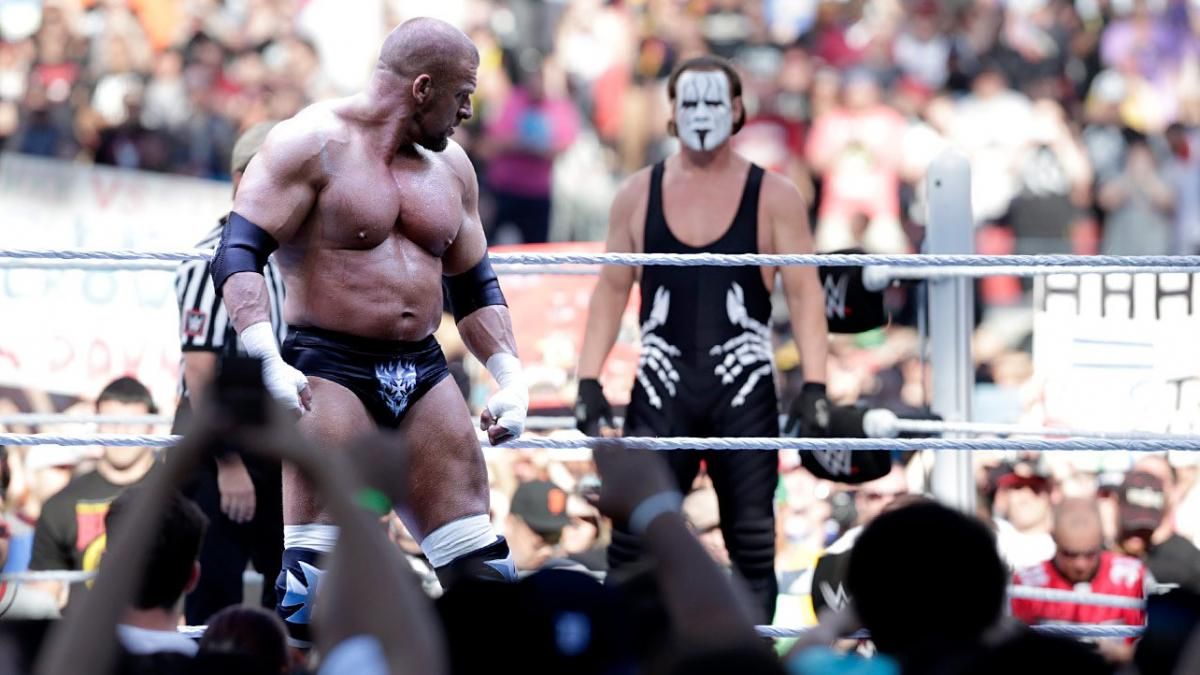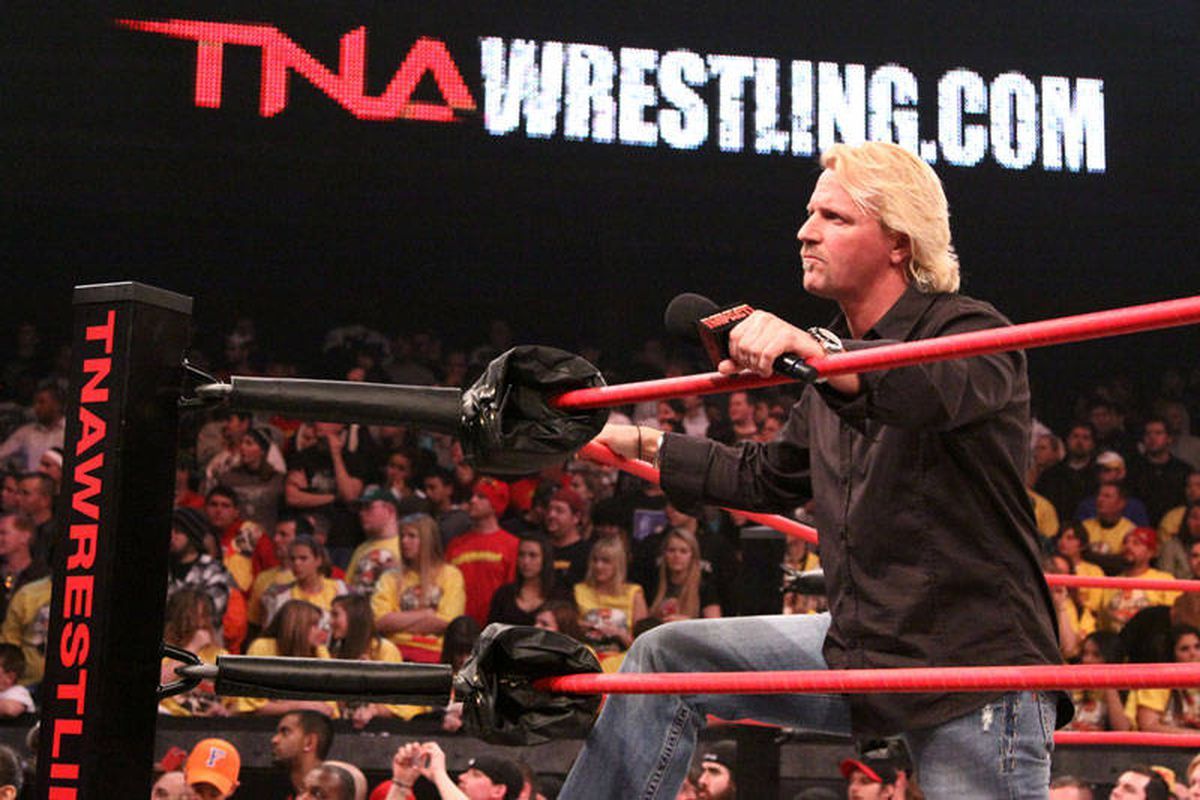Sting is an all-time great of the squared circle. It’s telling that he main evented for WCW, Impact Wrestling, and WWE across a span of four different decades. His time in the spotlight saw him shift styles and personas several times, reinventing himself to build upon his existing legacy and better fit the times.
Sting’s evolution included progressing from the Scorpion Deathlock hold that first brought him main event glory to using the Scorpion Deathdrop as a pinfall finisher. This article takes a look back through "The Icon’s" storied career to assess which finisher was ultimately his best.
10 Death Drop: Taking Down Triple H
Sting was an undeniable wrestling legend before he ever signed with WWE. Finally making the leap to the largest wrestling company in the world was a fine bow on his legacy, though, offering him the opportunity to add a WrestleMania match to his resume, as well as a WWE PPV main event.
It all started with his surprise arrival during Survivor Series 2014, hitting a Scorpion Death Drop on Triple H before laying Dolph Ziggler on top of Seth Rollins to determine the winner of the last match of the show. The Death Drop was the perfect move to strike quickly and with force.
9 Deathlock: The Original
While the Scorpion Death Drop would become a signature move for Sting during his arguably his most-watched run opposite the New World Order in WCW, he had been using the Scorpion Deathlock for years prior.
Indeed, the Stinger’s submission hold is synonymous with so much of his most iconic work. That includes his legendary bouts with Ric Flair and battles with the rest of the Four Horsemen. It’s difficult to deny the man’s original finisher that brought him so much success is his best, most important move.
8 Death Drop: Sudden Strikes
There are reasons why the Scorpion Deathlock stood the test of time, as a believable finisher that, particularly given Sting’s physical strength, he could apply to just about any opponent. However, a submission hold only works so well for more sudden attacks and brawls. It can be a bit cumbersome for a face wrestler who generally works a fast-paced style.
The Scorpion Death Drop made up for the deficits the Deathlock set up Sting for. It was particularly effective in his war with the New World Order that often saw him come down from the rafters to hit quick offense and be on his way.
7 Deathlock: Tapping Hollywood Hogan
While Sting’s Starrcade 1997 match with Hollywood Hogan is generally viewed to have been a disappointment, it nonetheless stands the test of time as the single most famous match Sting ever worked. After well over a year of storytelling, Sting returned to the ring to battle his arch-nemesis in the main event of one of the biggest shows in WCW history.
Despite the convoluted elements of the finish, the conclusion remains: Sting defeated Hogan for the WCW Championship with the Scorpion Deathlock. Even with the complicated nature of the finish and it being overturned in the weeks to follow, the image of Hogan submitting to Sting still stands out as a career-defining moment.
6 Death Drop: Avoids Bret Hart Comparisons
While the Scorpion Deathlock was synonymous with Sting and he started using it as a finisher years before Bret Hart, Bret is on the shortlist of wrestlers whose celebrity quite exceeded Sting’s. That’s not to mention that there’s little question Hart was the better in-ring performer (not so much a knock on Sting, as very few performers could compete with "The Hitman" in that regard).
As long as these two top stars were using the same signature hold, it invited comparisons. The Death Drop helped differentiate Sting for having a finisher than wasn't from any routine part of Hart’s repertoire.
5 Deathlock: Besting Ric Flair
While Sting’s rivalries with Hollywood Hogan, Big Van Vader, Lex Luger, and others were all important to defining his legacy, it’s difficult to say that any of his feuds were as essential to his career than his ongoing issue with Ric Flair. Across a span of decades, the two battled, often as not with world title implications.
Most importantly, Flair was the rival to put Sting on the map as a main event level guy. That happened when Flair went to a time limit draw with Sting at the original Clash of the Champions. Later, it would be Sting making "The Nature Boy" submit to solidify his place as not just a top challenger, but a champion in his own right.
4 Death Drop: Synonymous With Crow Sting
Sting was a bona fide main event level talent in the “Surfer Sting” persona that came to the ring with bleached blond hair and dressed in neon colors. However, he took his legacy to a whole new level starting in 1996 as he shifted to his darker “Crow” persona.
While the Scorpion Deathlock was a perfectly believable submission hold, the Death Drop looked all the more vicious for appearing as though it could break somebody’s neck. As such, the finisher fit his more edgy persona perfectly and became synonymous with the most famous version of the Sting character.
3 Deathlock: Lower Impact For An Old Legend
Now that wrestlers tend to speak openly about the realities of professional wrestling, fans have been exposed to quite a few stories of wrestlers who suffered long term consequences for their finishers. Hulk Hogan has cited his leg drop, Steve Austin has noted his Stone Cold Stunner, and Randy Savage complained of pains from his flying elbow drop all as causes for long term chronic pain that necessitated medical attention over time.
While Sting tended to work a high impact, fast-paced style, the Scorpion Deathlock was a relatively easy finisher on his own body and one that he could still turn to in the latter years of his in-ring career. That’s not to say the Death Drop is as high risk or high impact as some moves, but it nonetheless did require a bump on Sting’s part, which wouldn’t have gotten any easier on him as time as he grew older.
2 Death Drop: The False Finish At WrestleMania
While many predicted that Sting would defeat Triple H at WrestleMania 31, it was relatively difficult to picture him doing so via submission. Sure, "The Game" had tapped at WrestleMania before to the likes of Chris Benoit and John Cena, but these were big-time exceptions and didn’t feel as consistent with his legacy up against that of a fellow legend like Sting, as opposed to someone freshly getting put over at the main event level.
When Sting hit the Scorpion Death Drop, however, after the arrival of the New World Order to have his back, it felt like it really might mean the end of the match. Triple H wound up winning in the end, but the move offered the most drama that Sting would pull out the win, unlike the Scorpion Deathlock that felt as though it were waiting to get broken up.
1 Deathlock: Bound For Glory 2006
At Bound For Glory 2006, Sting began a four year run of consistently closing out Impact Wrestling’s biggest show of the year. His headliner against Jeff Jarrett was a clear cut case of the two biggest, best established stars in the company going head to head. Moreover, the stakes were clear cut, with Jarrett’s world title on the line opposite Sting’s career.
Sting’s WCW and WWE efforts tend to overshadow what he did in Impact. A moment like submitting Jarrett with Scorpion Deathlock—in so doing, picking up his first world title in nearly seven years—legitimately added to "The Icon’s" legacy, though, while simultaneously elevating Impact as a whole.

